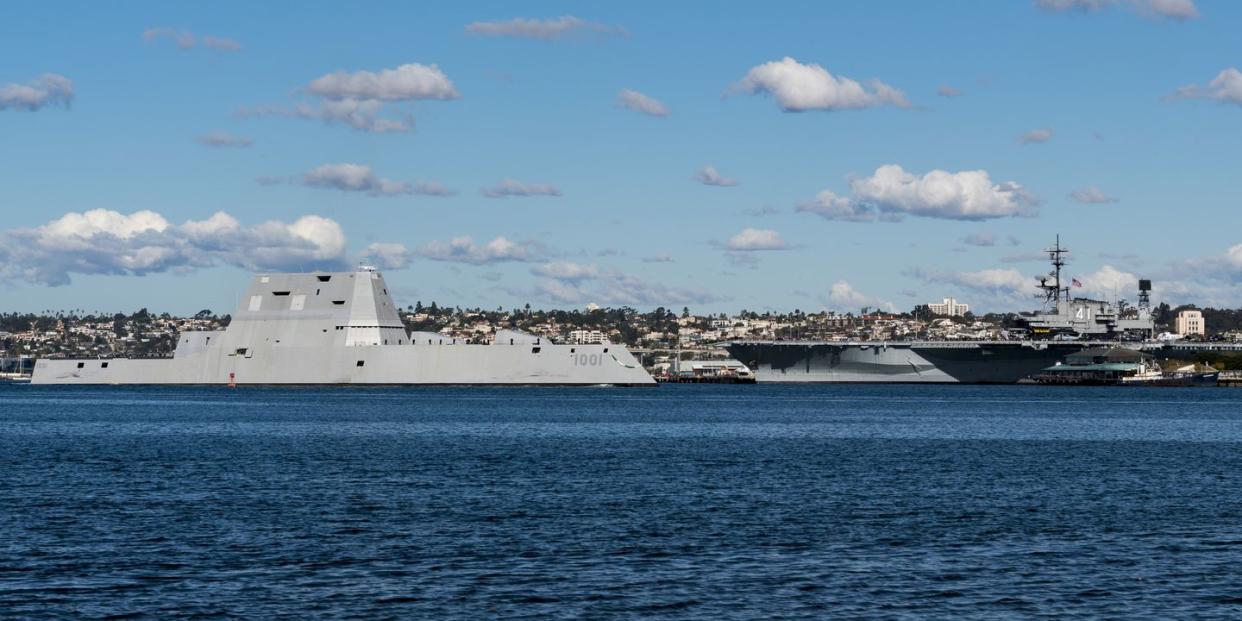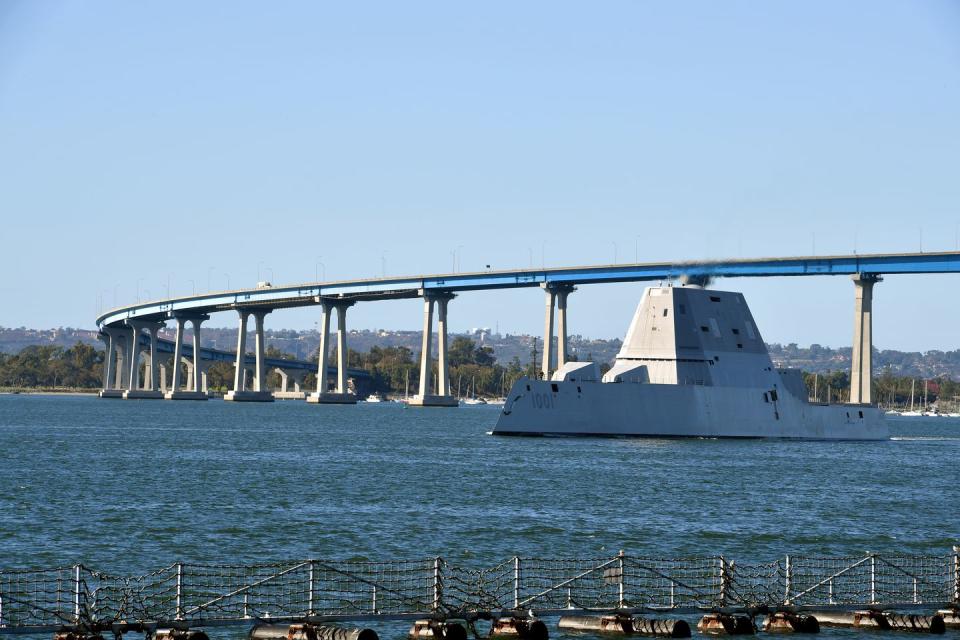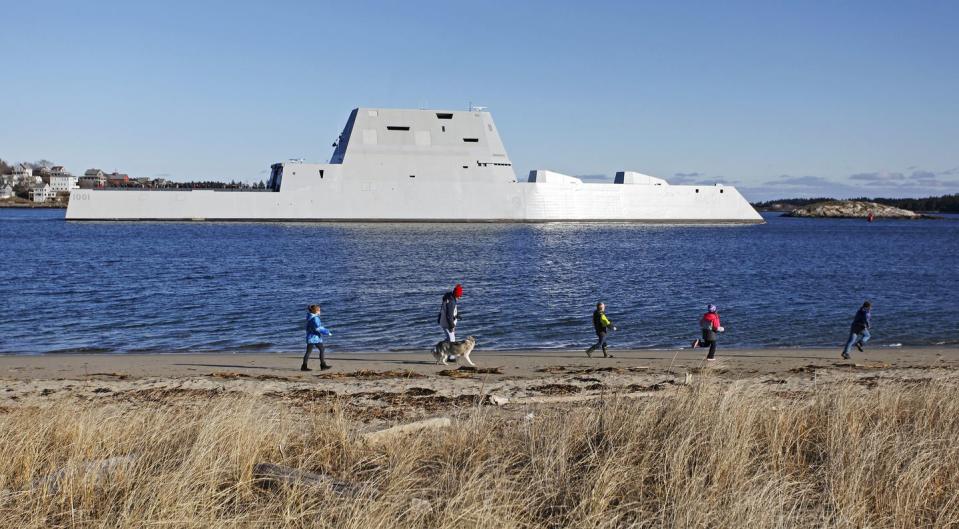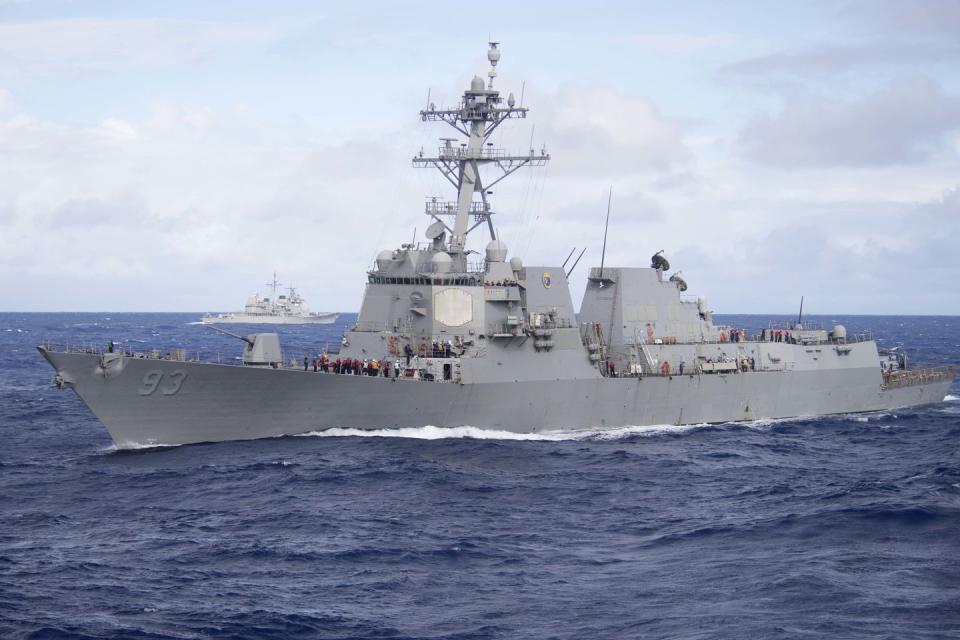As the Last Zumwalt-Class Vessel Launches, the Stealth Destroyer's Fate Remains Deeply Uncertain

The USS Lyndon Johnson, the third and final Zumwalt-class guided missile destroyer, floated out of its drydock over the weekend. Meanwhile, the second of the class, USS Michael Monsoor, arrived at its future home port of San Diego, California.
While the launching of the Johnson completes the construction of the controversial destroyers, the program-which was cut by more than 90 percent, and still lacks ammunition for the six advanced gun systems-remains deeply troubled.
The 610-foot-long USS Johnson launched on Sunday, after a multi-day operation that saw the ship moved from dry land into a drydock, then the drydock filled with water to float the ship. As gCaptain reports, the ship is expected to be christened in the spring of 2019.

The USS Johnson is the third and final destroyer of the Zumwalt class that includes sister ships USS Zumwalt and USS Monsoor. Once upon a time, the Zumwalts were planned to be a mighty class of destroyers meant to replace the firepower of the Navy's four Iowa-class battleships. The retirement of the four Iowas left a gaping hole in the U.S. Navy’s ability to provide fire support for the Marine Corps during amphibious landings. To make up for the shortfall, and to support land wars in the post-9/11 era, the Navy had planned to 32 Zumwalt class destroyers.
Instead of 32 ships, the U.S. got three. Rising production costs, combined with the huge cost of those land wars and an economic recession, truncated the number of Zumwalts from 32 to seven, and finally to just three. According to the Congressional Research Service (PDF) the three destroyers will wind up costing taxpayers a grand total of $13 billion. That’s enough to buy seven Arleigh Burke class guided missile destroyers at current prices. And unlike the Zumwalts, the Burkes are a proven design with a full suite of working sensors and weapons.

One major, lingering, embarrassing problem with the Zumwalts: The Navy has no plans to buy ammunition for the main guns. Each destroyer was built with two 155-millimeter Advanced Gun System weapons, which lower into the ship’s stealthy profile when not in use. The AGS was meant to be armed with the Long Range Land Attack Projectile (LRLAP), a GPS-guided shell with an effective range of 60 miles.
In 2001, at the very beginning of the Zumwalt program, Lockheed Martin estimated each LRLAP round would cost about $50,000-expensive, but fair considering each was practically guaranteed to hit its target. But cutting of the number of ships built from 32 to 3, along with the rising development costs, dramatically increased the cost of each round to up to $800,000 each. That was too expensive even for the U.S. Navy, and the service announced it would not buy the LRLAP.

You can see where this leaves the Navy with a dilemma. The service now has three destroyers with no ammunition for their long range guns, which was the entire point of building them to begin with. The Navy is reportedly planning to reconfigure the destroyers as hunter-killers, meant to seek out and attack enemy ships and land targets with precision-guided missiles. In such a case, the Zumwalts would rely on the 80 vertical launch missile silos per ship to provide offensive firepower.
Meanwhile, the U.S. Marines are still awaiting the fire support replacement for the Iowa-class battleships, 26 years after the last battleship was retired. Now that the Zumwalt program has become a billion-dollar misfire, the Marines are unlikely to ever get a dedicated naval gunfire platform again. In the future, the Marines will rely on a mix of 5-inch guns on cruisers and destroyers, F/A-18 Super Hornet and F-35 Joint Strike Fighters operating from aircraft carriers, Tomahawk land attack cruise missiles, and their own fixed wing aircraft, helicopters, and drones.
('You Might Also Like',)

